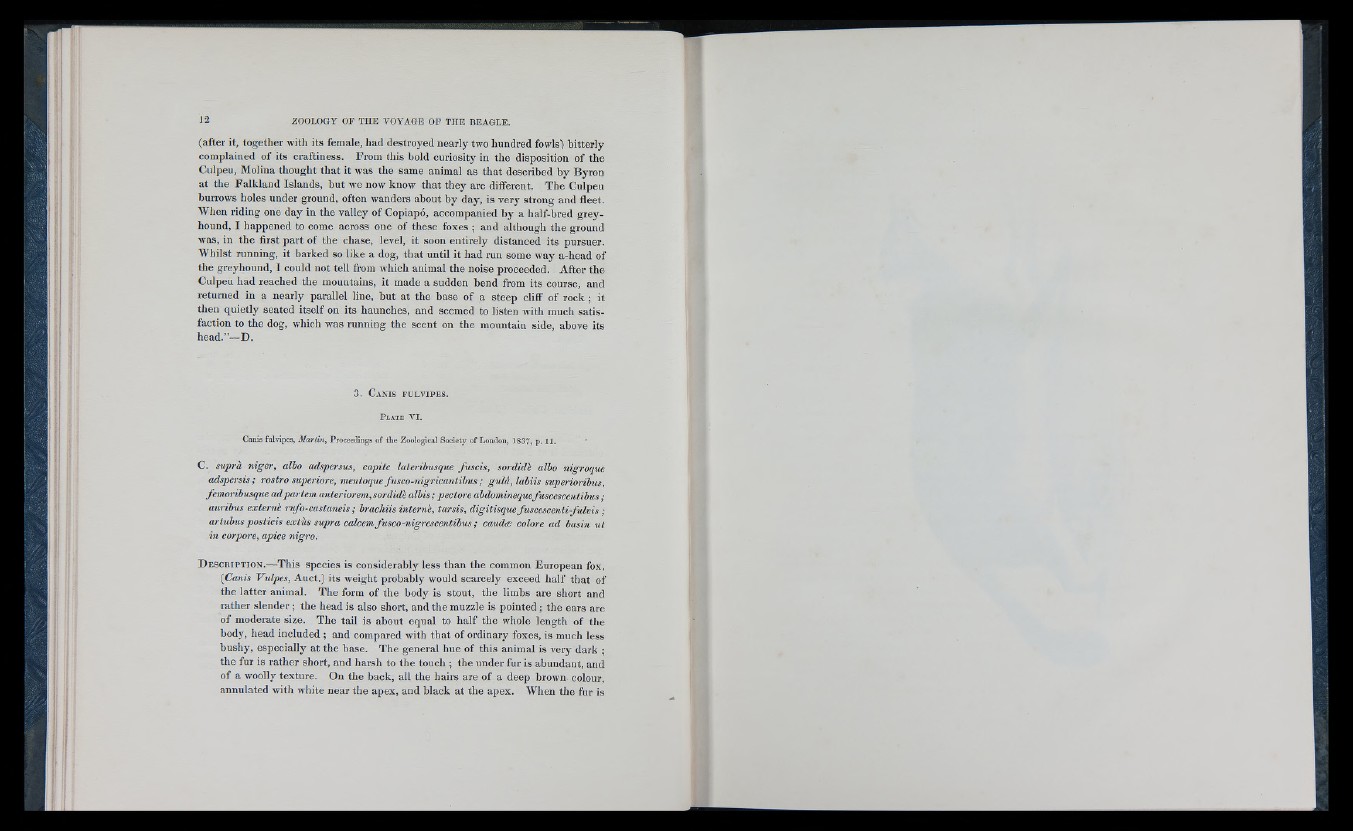
(after it, together with its femaie, had destroyed neariy two hundred fowls') bitterly
complained of its craftiness. From this boid curiosity in the disposition of the
Culpeu, Molina thought that it was the same animal as that described by Byron
at tlie Falkland Islands, hut we now know that they are different. The Culpeu
burrows holes under ground, often wanders about by day, is very strong and fleet.
When riding one day in the valley of Copiapd, accompanied by a half-bred greyhound,
I happened to come across one of these foxes ; and although the ground
was, in the first part of the chase, level, it soon entirely distanced its pursuer.
Whilst running, it barked so like a dog, that until it had run some way a-head of
the greyhound, I could not tell from which animal the noise proceeded. After the
Culpeu had reached the mountains, it made a sudden bend from its course, and
returned in a nearly parallel line, but at the base of a steep cliff of rock ; it
then quietly seated itself on its haunches, and seemed to listen with much satisfaction
to the dog, which was running the scent on the mountain side, above its
head.”—D.
3 . C a n is f u l v ip e s .
, Martin,
P l a t e Y I .
lings of the Zoological Society of London, 1837, p. 11.
C. suprà niger, albo aclspersus, capite lateribusque fuscis, sordidh albo nigroque
adspersis; rostro superiore, mentoque fusco-nigricantibus ; guU, labiis superioribus,
femoribusque ad partem anteriorem, sordidè albis ; pectore abdominequefuscescentibus ;
aurihus externè imfo-castaneis ; hrachiis interne, tarsis, digitisque fuscescenli-fulvis ;
artubus posticis extiis supra calcem fusco-nigrescentibus ; caudce colore ad hasin ut
in corpore, apice nigro.
D e s c r ip t io n .— This species is considerably less than the common European fox,
(Canis Vulpes, Auct.) its weight probably would scarcely exceed half that of
the latter animal. The form of the body is stout, the limbs are short and
rather slender; the head is also short, and tlie muzzle is pointed ; the ears are
of moderate size. The tail is about equal to half the whole length of the
body, head included ; and compared with that of ordinary foxes, is much less
bushy, especially at the base. The general hue of this animal is very dark ;
the fur is rather short, and harsh to the touch ; the under fur is abundant, and
of a woolly texture. On the back, all the hairs are of a deep brown colour,
annulated with white near the apex, and black at the apex. When the fur is